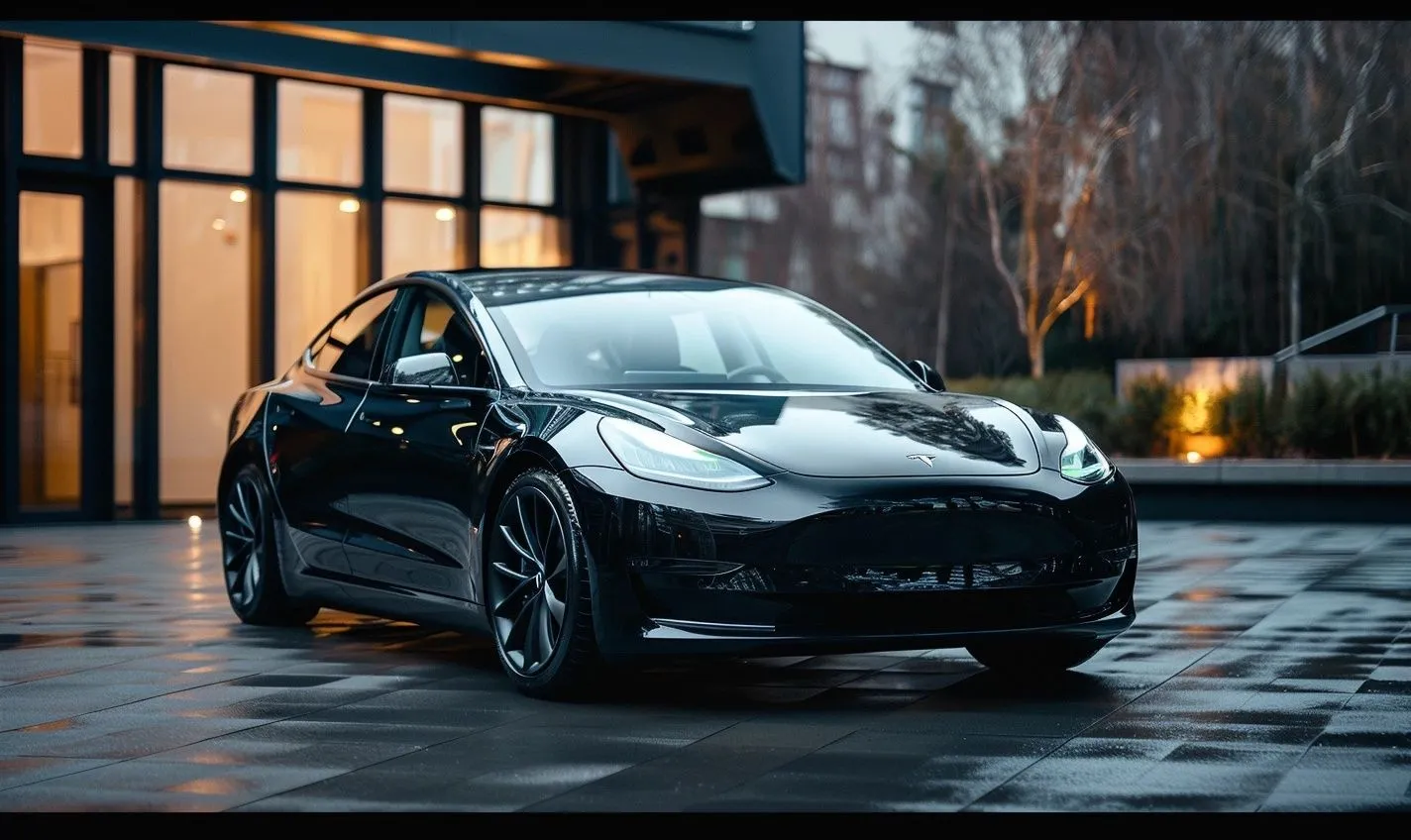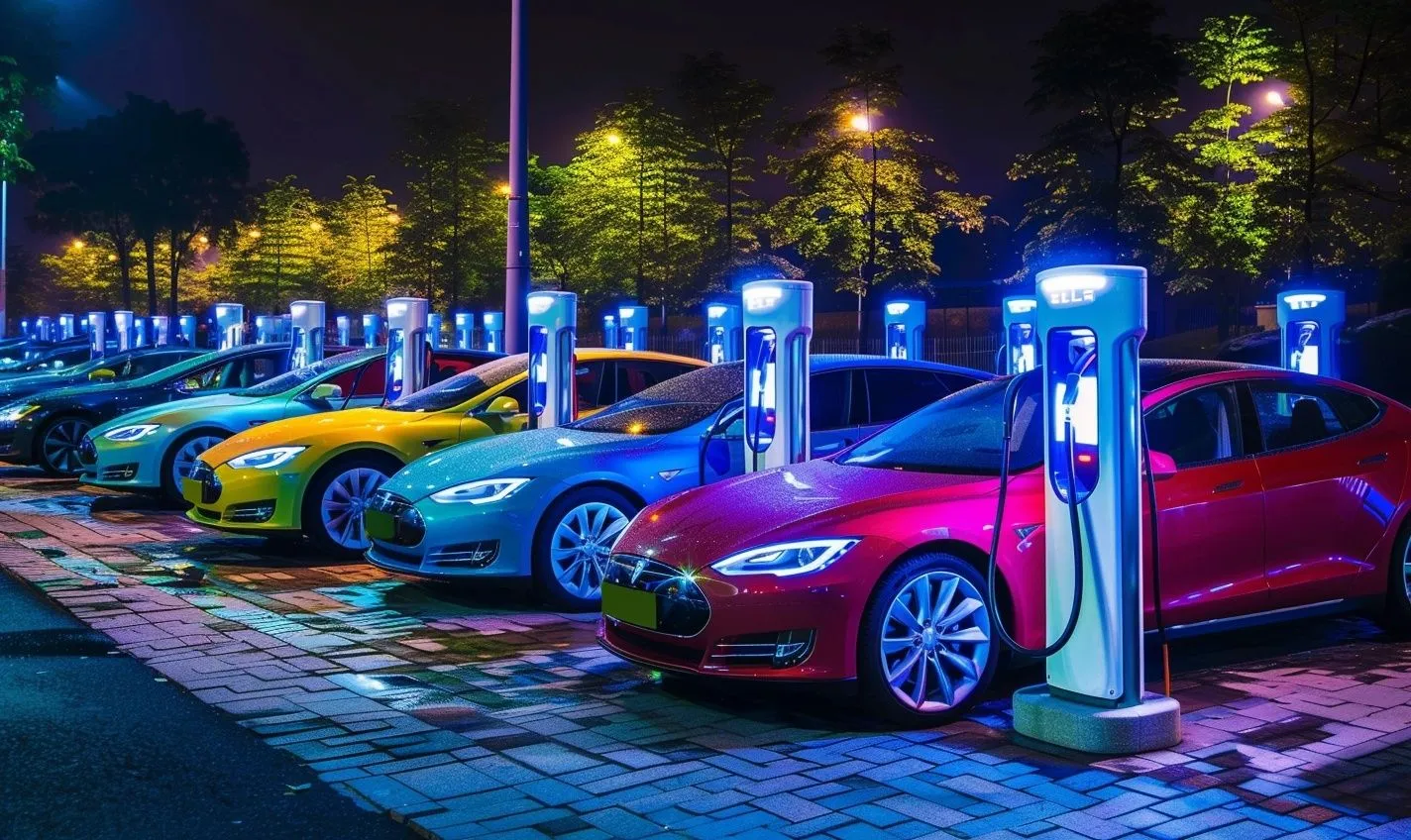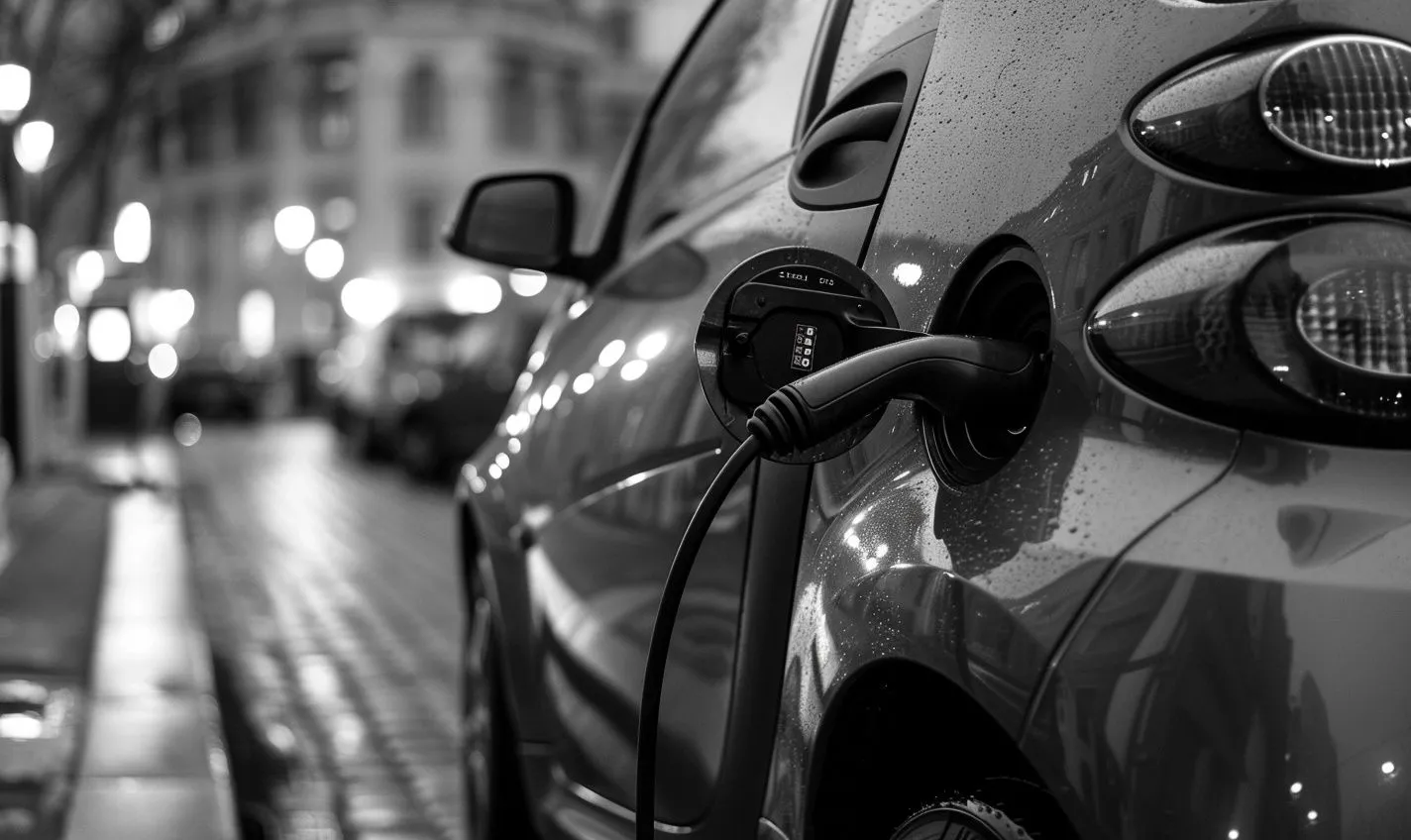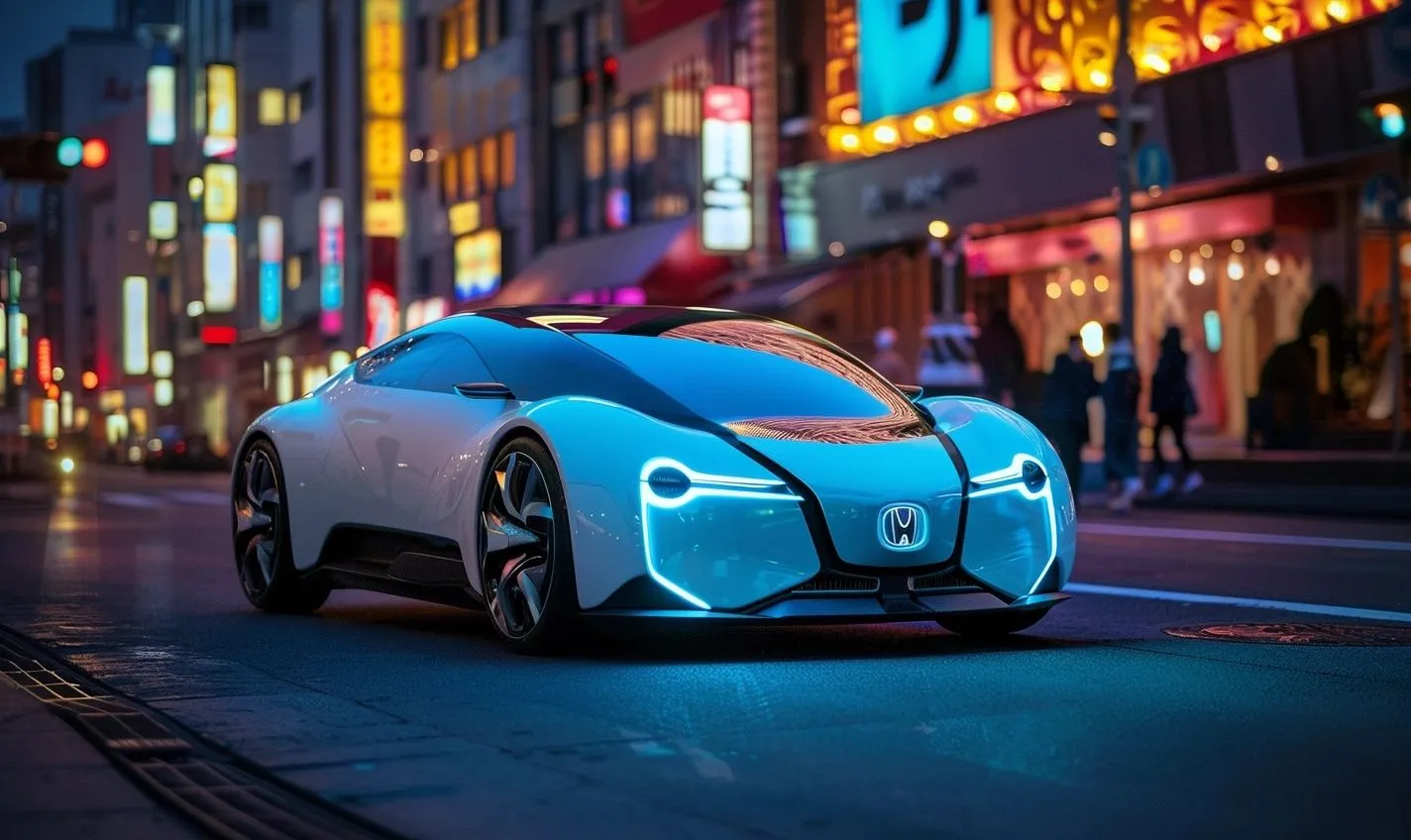
Welcome, fellow enthusiasts of sustainable technology and eco-friendly transportation! Today, we embark on an enlightening journey, delving into the captivating realm of electric vehicles. The history and evolution of electric cars are a testament to human ingenuity and our collective commitment to forging a greener future.
From humble beginnings to revolutionary advancements, the trajectory of electric cars mirrors society’s evolving consciousness toward environmental preservation and energy efficiency. As we trace back to the early 19th century, pioneers like Robert Anderson and Thomas Davenport laid the foundation for what would eventually become a thriving industry driving toward sustainability.
The evolution of electric cars has seen remarkable milestones, from the first practical electric vehicle by Thomas Parker in the late 1800s to the innovative developments by modern giants like Tesla, Nissan, and Chevrolet. With each technological leap, electric cars have surpassed limitations, offering enhanced performance, extended range, and sleek designs that rival their traditional counterparts.
Join us as we unravel the narrative of how electric cars have sparked a paradigm shift in the automotive landscape, promising a cleaner, greener tomorrow for generations to come. Let us celebrate the triumphs, dissect the challenges, and envision a future where electric cars reign supreme, harmonizing with nature and propelling us toward a sustainable tomorrow.

The Beginnings of Electric Cars: Early Innovations
Electric cars may seem like a recent innovation, but their history dates back much further than expected. Let’s journey through time to explore the evolution of electric vehicles.
Early Days: 19th Century
In the 19th century, inventors like Robert Anderson and Thomas Davenport laid the groundwork for electric cars with their primitive battery-powered vehicles. These early models were rudimentary but set the stage for future advancements.
Rise of Electric Vehicles
As the 20th century dawned, electric cars gained popularity for their quiet operation and lack of emissions. Innovations by manufacturers like Baker Electric, Detroit Electric, and others propelled the electric vehicle market forward.
Challenges Faced
Despite initial success, electric cars faced challenges such as limited range and the high cost of batteries. These hurdles led to a decline in the electric vehicle market as gasoline-powered cars dominated the automotive industry.
Modern Renaissance
Fast forward to the 21st century, and electric cars are experiencing a renaissance. Technological advancements have addressed previous limitations, making electric vehicles a viable and eco-friendly alternative to traditional automobiles.
Governments worldwide are implementing initiatives to promote electric car adoption, while infrastructure development for charging stations is expanding rapidly to support the growing number of electric vehicles on the road.
Today, electric cars are no longer a novelty but a mainstream choice for environmentally conscious drivers who seek sustainable transportation options.

Challenges Overcome: The Rise of Electric Vehicles
Electric cars have come a long way since their inception, evolving from a novelty to a serious contender in the automotive industry. Let’s delve into their journey and the hurdles they have conquered.
The Beginnings of Electric Cars – Early Innovations
In the early days, electric cars were seen as a niche concept, overshadowed by their gasoline counterparts. However, visionaries like Thomas Davenport and Robert Anderson sparked the idea of harnessing electricity for transportation.
Electrification Trends: Adoption and Acceptance
Despite initial skepticism, the allure of clean energy and environmental consciousness gradually propelled the adoption of electric cars. Innovations in battery technology and charging infrastructure were pivotal in garnering acceptance.
The Rise of Tesla: Elon Musk’s Tesla Motors revolutionized the electric vehicle market, showcasing that eco-friendly vehicles could also be stylish, high-performing, and desirable.
Revolutionizing the Market: Electric Cars Go Mainstream
As concerns over climate change escalated, electric cars transitioned from a novelty to a mainstream choice. Major automakers started investing in electric vehicle technology, offering various models to cater to varying consumer needs.
Rapid Growth: The electric vehicle market witnessed exponential growth, with sales soaring globally and electric cars becoming common on the roads.
Technological Advances: Enhancing Electric Vehicle Performance
Technological advancements such as regenerative braking, improved battery efficiency, and autonomous driving features have enhanced the performance and appeal of electric cars, making them a viable alternative to traditional vehicles.
Range Anxiety: With advancements in battery technology, the fear of running out of charge (range anxiety) has significantly reduced, paving the way for longer trips and increased convenience.
Cost Efficiency: Electric vehicles are becoming more cost-competitive due to reduced maintenance costs, government incentives, and the overall decreasing cost of battery production.

Electrification Trends: Adoption and Acceptance
As we delve into the history and evolution of electric cars, one cannot overlook the electrification trends that have shaped their adoption and acceptance in the modern world. From their humble beginnings to revolutionizing the market, electric vehicles have come a long way in gaining widespread recognition.
The Beginnings of Electric Cars – Early Innovations
When electric cars first hit the scene, they were seen as novelties with limited range and power. However, early innovators paved the way for future advancements by showcasing the potential of electric vehicles in the late 19th and early 20th centuries.
Challenges Overcome: The Rise of Electric Vehicles
Despite facing challenges such as battery limitations and infrastructure constraints, electric vehicles have gradually overcome these obstacles to gain traction in the automotive industry. Innovations in battery technology and charging infrastructure have significantly contributed to their rise.
Revolutionizing the Market: Electric Cars Go Mainstream
With the evolution of electric cars, we have witnessed a shift towards mainstream adoption. Environmental consciousness, government incentives, and technological advancements have all played a crucial role in making electric vehicles a viable alternative to traditional gasoline-powered cars.
But how did electric cars go from futuristic concepts to everyday transportation options?
- Improved battery technology enhancing range and performance
- Government subsidies incentivizing electric vehicle purchase
- Increased awareness of environmental impact driving consumer demand
Technological Advances: Enhancing Electric Vehicle Performance
Technological advancements in electric vehicles have improved their performance and made them more appealing to consumers. Features like regenerative braking, fast charging, and autonomous driving capabilities have transformed the driving experience.
Environmental Impact: Electric Cars and Sustainability
One of the fundamental driving forces behind adopting electric cars is their positive environmental impact. By reducing greenhouse gas emissions and dependence on fossil fuels, electric vehicles contribute to a more sustainable future for generations.
Are you ready to join the electric revolution and make a difference?
- Consider the environmental benefits of switching to an electric vehicle
- Explore government incentives and rebates available for electric car owners
- Experience the thrill of driving a high-performance, eco-friendly electric car

Revolutionizing the Market: Electric Cars Go Mainstream
Electric cars have come a long way since the early days of novelty vehicles and niche interest. Today, they are no longer just a futuristic dream but a tangible reality on our roads. This shift from novelty to mainstream is nothing short of remarkable. Let’s delve into the fascinating journey of how electric cars have revolutionized the automotive market.
The Beginnings of Electric Cars – Early Innovations
It all began with humble roots in the 19th century when electric cars debuted. These early innovations paved the way for the electric vehicles we see today, albeit in a more rudimentary form.
Challenges Overcome: The Rise of Electric Vehicles
Over time, electric cars had to overcome various hurdles, such as limited range, high costs, and a lack of charging infrastructure. However, innovations and advancements gradually addressed these challenges, making electric vehicles more viable for the masses.
Electrification Trends: Adoption and Acceptance
As concerns over climate change grew, the shift towards electric cars gained momentum. With advancements in battery technology and a shift towards sustainable living, people began embracing electric vehicles as a practical and eco-friendly transportation option.
So, how did electric cars evolve from a niche novelty to a mainstream marvel? Let’s take a closer look:
- Improved battery technology for more extended range
- Decrease in costs, making electric cars more affordable
- Widespread charging infrastructure for convenience
This evolution in the electric vehicle sector is akin to a once timid caterpillar transforming into a majestic butterfly, captivating hearts and minds.
Technological Advances: Enhancing Electric Vehicle Performance
With significant technological advancements, electric cars now boast impressive performance metrics, challenging the dominance of traditional combustion engine vehicles. Features like instant torque and regenerative braking have made electric cars eco-friendly and exhilarating.
Environmental Impact: Electric Cars and Sustainability
One of the most compelling reasons for the mainstream adoption of electric cars is their positive environmental impact. By reducing greenhouse gas emissions and dependence on fossil fuels, electric vehicles play a critical role in building a sustainable future for generations to come.

Technological Advances: Enhancing Electric Vehicle Performance
As the demand for eco-friendly transportation grows, so does the importance of enhancing electric vehicle performance through technological advancements. Let’s delve into the evolution of electric cars and how innovations have shaped their capabilities over the years.
The Beginnings of Electric Cars – Early Innovations
Electric cars have come a long way since their inception in the early 19th century. While initially overshadowed by gasoline-powered vehicles, early innovations laid the foundation for their development.
Challenges Overcome: The Rise of Electric Vehicles
Despite facing challenges such as limited range and high costs, advancements in battery technology and motor efficiency have propelled the rise of electric vehicles. Manufacturers have worked tirelessly to overcome these obstacles.
Electrification Trends: Adoption and Acceptance
With a shift towards sustainability, the adoption of electric cars has gained momentum. Industry players have focused on improving design and performance to cater to consumers’ changing preferences.
With growing concerns about environmental impact, more people are turning to electric vehicles as a cleaner alternative.
Revolutionizing the Market: Electric Cars Go Mainstream
Electric cars have transitioned from niche products to mainstream vehicles. The integration of cutting-edge technology, including regenerative braking and intelligent battery management systems, has revolutionized the market.
But how exactly have these technological advances enhanced electric vehicle performance?
– Improved Battery Technology: Longer range and faster charging times.
– Enhanced Motor Efficiency: Increased power output and better acceleration.
– Smart Energy Management: Optimized performance based on driving conditions.
– Advanced Regenerative Braking Systems: Capturing energy during deceleration to increase efficiency.
– Innovative Lightweight Materials: Enhancing aerodynamics and energy efficiency.
With these enhancements, electric cars have become environmentally friendly, practical, and efficient for modern consumers.

Environmental Impact: Electric Cars and Sustainability
The Beginnings of Electric Cars – Early Innovations
In the 19th century, inventors like Thomas Davenport and Robert Anderson introduced the first electric vehicles, marking the initial steps toward a sustainable transportation solution.
Challenges Overcome: The Rise of Electric Vehicles
Despite facing hurdles such as limited battery range and high costs, continuous technological advancements propelled electric cars to become a viable alternative to traditional vehicles.
Electrification Trends: Adoption and Acceptance
With a growing emphasis on reducing carbon footprints and embracing eco-friendly practices, electric cars gained popularity, leading to increased adoption and acceptance worldwide.
Revolutionizing the Market: Electric Cars Go Mainstream
Electric cars, transitioning from niche products to mainstream options, reshaped the automotive industry by offering sustainable alternatives without compromising performance or style.
Technological Advances: Enhancing Electric Vehicle Performance
Continuous innovations in battery technology, aerodynamics, and energy efficiency have significantly improved the performance of electric cars, making them more appealing to a broader audience.
Moreover, developing regenerative braking systems and innovative charging solutions has made electric vehicles more convenient and efficient for daily use.
- Longer driving range
- Faster charging times
- Enhanced battery life
Government Initiatives: Policies Driving Electric Car Growth
Government incentives, tax credits, and emission regulations have been crucial in accelerating electric vehicle adoption and encouraging manufacturers and consumers to embrace sustainable transportation solutions.
Infrastructure Development: Charging Stations and Accessibility
Establishing a robust charging infrastructure, including public charging stations and home installations, has addressed concerns regarding range anxiety and accessibility, making electric cars a practical choice for daily commuting.
Future Projections: Electric Cars in the Age of Innovation
As technology continues to evolve and environmental awareness grows, the future of electric cars looks promising. Projections indicate a significant increase in market share and continued advancements in sustainability.
Government Initiatives: Policies Driving Electric Car Growth
As we delve deep into the history and evolution of electric cars, one cannot overlook the crucial role played by government initiatives in propelling the growth of this green transportation solution. Let’s explore how policies have shaped the landscape for electric vehicles.
The Beginnings of Electric Cars – Early Innovations
Early innovators paved the way for electric vehicles, but the push from governments truly set the stage for their evolution. Without policy support, electric cars may have never gained traction.
Challenges Overcome: The Rise of Electric Vehicles
Government incentives and subsidies helped overcome hurdles like high costs and limited range. These policies not only made electric cars more accessible but also incentivized manufacturers to invest in technology.
Electrification Trends: Adoption and Acceptance
Governments encouraged consumers to embrace electric cars through tax credits and rebates, fostering a shift towards sustainable transportation options. This support significantly contributed to the widespread adoption of electric vehicles.
Revolutionizing the Market: Electric Cars Go Mainstream
With regulatory mandates and emission targets, governments pushed automakers to prioritize electric vehicle development. The result? Electric cars started becoming common on the roads, reshaping the automotive industry.
Technological Advances: Enhancing Electric Vehicle Performance
Government-funded research initiatives spurred advancements in battery technology and charging infrastructure. This support not only boosted the performance of electric cars but also made them more convenient for everyday use.
Environmental Impact: Electric Cars and Sustainability
- We are reducing greenhouse gas emissions.
- I am minimizing air pollution in urban areas.
- It is preserving natural resources.
Infrastructure Development: Charging Stations and Accessibility
- We are expanding charging networks nationwide.
- I am installing fast chargers along highways.
- We are offering incentives for workplace charging.
Future Projections: Electric Cars in the Age of Innovation
Governments continue to play a crucial role in shaping the future of electric cars. By setting ambitious targets and fostering innovation, policymakers are driving sustainable transportation’s next phase of evolution.
Infrastructure Development: Charging Stations and Accessibility
As electric vehicles continue to gain traction, one critical aspect often overlooked is the infrastructure supporting this shift toward sustainable transportation. The availability and accessibility of charging stations play a pivotal role in encouraging the adoption of electric cars.
The Need for Charging Stations:
Imagine having an electric car in your garage but nowhere to charge it conveniently. The infrastructure of charging stations becomes the lifeline for electric vehicle owners, ensuring they can power up their cars quickly and efficiently.
Challenges Faced:
Initially, the scarcity of charging stations posed a significant hurdle for electric car owners. Range anxiety, the fear of running out of power without a charging point in sight, was a genuine concern for many drivers.
- Range anxiety challenged the perception of electric cars as a viable alternative.
- Lack of infrastructure hindered the growth of the electric vehicle market.
The Rise of Charging Networks:
Over the years, there has been a remarkable surge in the development of charging infrastructure to support the growing fleet of electric vehicles. Companies, governments, and communities worldwide have made concerted efforts to expand the charging station network.
- Public charging stations are now more prevalent in urban areas and along highways.
- Private entities are investing in fast-charging technologies for quicker replenishment.
Accessibility and Convenience:
Convenience is vital when it comes to charging stations. The ease of access to charging points can make or break the user experience for electric vehicle owners. Efforts are being made to ensure that charging infrastructure is widespread and easily accessible.
And the evolution continues. Stay tuned as we delve into the future projections of electric cars in the age of innovation.
Future Projections: Electric Cars in the Age of Innovation
Embracing Innovation: Electric Cars Pave the Way
Electric cars have come a long way from their humble beginnings, revolutionizing how we think about transportation. But how did we get here? Let’s take a trip down memory lane and explore the history and evolution of electric vehicles.
The Beginnings of Electric Cars: Early Innovations
In the late 19th century, visionaries like Thomas Davenport and Robert Anderson laid the foundation for electric cars with their early prototypes. These vehicles were a whisper of what was to come, igniting a spark of curiosity in the minds of innovators.
Challenges Overcome: The Rise of Electric Vehicles
Electric cars persevered despite facing hurdles such as limited battery technology and range anxiety. Innovations in battery efficiency and charging infrastructure propelled electric vehicles into the spotlight, marking the dawn of a new era in transportation.
Electrification Trends: Adoption and Acceptance
The demand for eco-friendly alternatives surged as concerns over climate change and air pollution grew. Electric cars became a symbol of sustainability, driving widespread adoption and acceptance among consumers worldwide.
Revolutionizing the Market: Electric Cars Go Mainstream
With significant automakers investing in electric vehicle technology, the market witnessed a seismic shift towards electrification. The emergence of sleek, high-performance electric cars captivated the masses, reshaping the automotive landscape.
Technological Advances: Enhancing Electric Vehicle Performance
Technological advancements have transformed electric cars into engineering marvels, from enhanced battery range to cutting-edge autonomous features. Today, electric vehicles offer a blend of power, efficiency, and innovation unmatched by their gas-guzzling counterparts.
Environmental Impact: Electric Cars and Sustainability
The environmental benefits of electric cars are clear – reduced carbon emissions, cleaner air, and a greener tomorrow. By choosing electricity, drivers save money on fuel and contribute to a more sustainable planet.
Government Initiatives: Policies Driving Electric Car Growth
Government incentives and regulations have played a crucial role in accelerating the growth of electric cars. Subsidies, tax credits, and emissions targets incentivize manufacturers and consumers to embrace the electric revolution.
Infrastructure Development: Charging Stations and Accessibility
The proliferation of charging stations has addressed one of the major concerns surrounding electric vehicles – range anxiety. With an ever-expanding network of chargers, drivers can now enjoy the freedom of long-distance travel with their electric cars.
Conclusion
As we wrap up our exploration of the history and evolution of electric cars, it is evident that these vehicles have come a long way since their inception in the early 19th century. From the slow and steady progress in the early years to the rapid advancements in technology and performance, electric cars have truly evolved into a viable and sustainable transportation option.
With the pressing need to combat climate change and reduce our dependency on fossil fuels, electric cars have emerged as a crucial solution to build a greener and cleaner future. The shift towards electric vehicles is about embracing innovative technology and making a conscious choice for the well-being of our planet and future generations.
As more automakers invest in electric vehicle development and infrastructure continues to improve, we are witnessing a significant shift towards a more sustainable mode of transportation. The journey of electric cars is far from over, and we can expect to see even more remarkable advancements in the years to come.
By staying informed, supporting the growth of electric vehicles, and making eco-friendly choices, we can contribute to accelerating the transition towards a more sustainable and environmentally conscious future. We can change towards a cleaner, greener world with electric cars leading the way.
Frequently Asked Questions (FAQs)
What is the history of electric cars?
Electric cars have a long history dating back to the early 19th century, with the first practical electric car made in the 1880s.
How have electric cars evolved?
Electric cars have evolved from limited-range vehicles to high-performance models with advanced technologies and longer driving ranges.
When did electric cars start gaining popularity?
Electric cars started gaining popularity in the early 2000s due to concerns about fossil fuel reliance and environmental issues.
What are some key milestones in the evolution of electric cars?
Key milestones include the introduction of modern lithium-ion batteries, advancements in charging infrastructure, and the development of electric vehicle technology by major automakers.
How do electric cars compare to traditional gasoline vehicles?
Electric cars produce zero emissions, are quieter, and have lower maintenance costs. However, they may have limited range and charging infrastructure compared to gasoline cars.